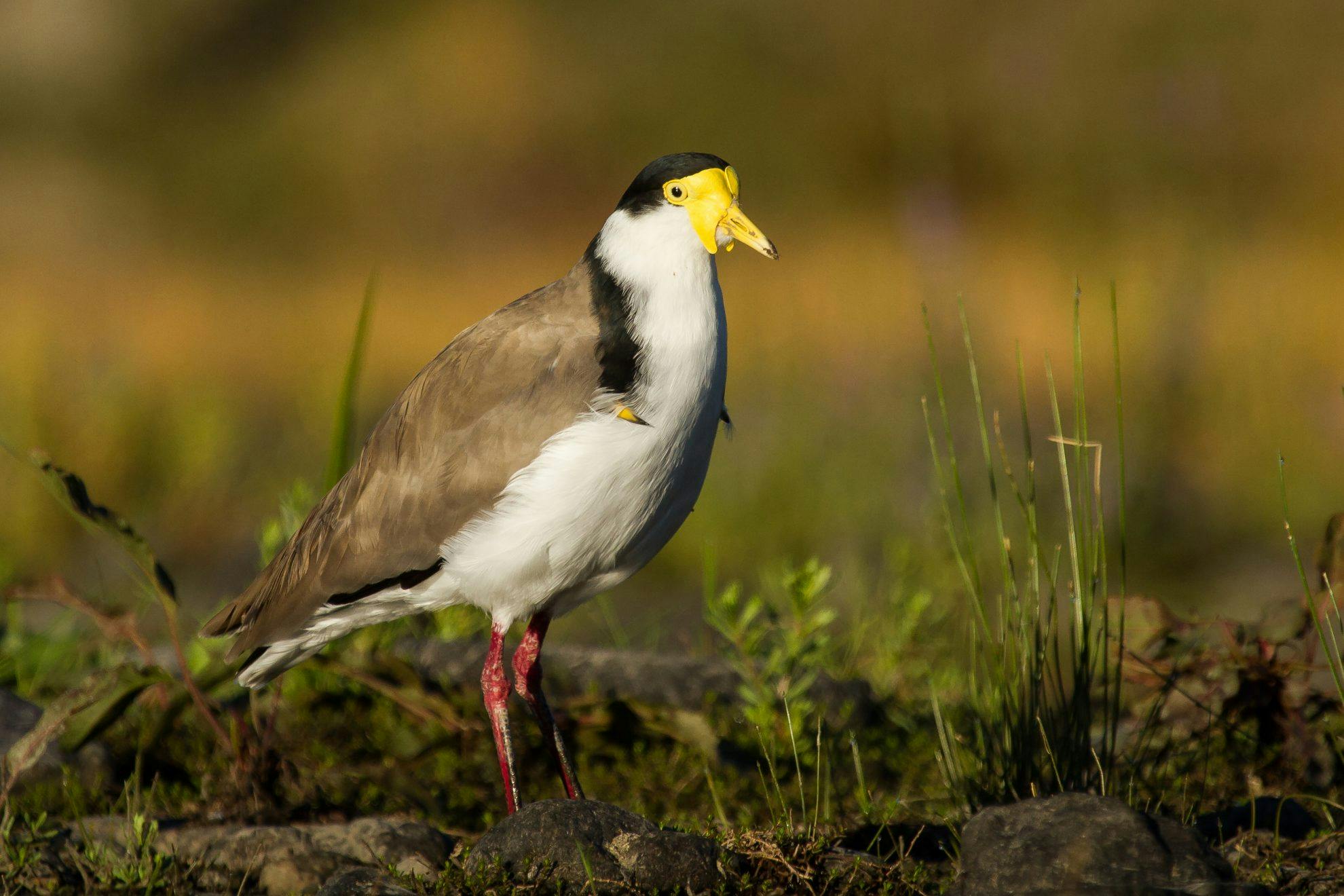A striking bird that has made New Zealand its home.
The spur-winged plover is one of our most successful self-introduced birds, going from a fully protected native species to having that protection lifted in 2010. The first record of the birds breeding in New Zealand was near Invercargill in 1932, and by 1980 they had spread to Northland.
Conservation status: Native species classified as ‘not threatened’.
Features: The spur-winged plover is a large, stocky wading bird. The most distinguishing features of this loud and obtrusive bird are its bright yellow bill, eye ring and wattles, the latter of which hang ‘droopily’ down the side of its face. The top of the head and back of the neck are black, extending down around the shoulder area resembling a collar. The rest of the head, neck and under parts are white and the back and upper parts are a grey/brown. It has reddish-brown long and stout legs. The origin of its name comes from the very sharp spurs that protrude off the shoulder of the wings.
Call: Best described as a very shrill, loud, staccato rattle. They call most often when disturbed.
Nesting: Plovers breed as single, isolated pairs between July and January and all aspects of the rearing, including incubation (32 days), are shared by both parents. They nest in a wide range of habitats but are most commonly seen nesting in developed areas such as pasture, parks and golf courses. The nest itself is a simple scrape in the ground lined with twigs, grasses and small pebbles. The clutch is usually three or four eggs.
Diet: They mainly eat invertebrates, but also consume a wide variety of species, including molluscs, crustaceans and worms.
Bird spotting tip: Spur-winged plovers can be found in reasonably open terrain. They prefer to be near water, so estuaries, lake shores, beaches, riverbeds and wetlands are good places to look. Pasture areas with water nearby are also good.
Feathery fact: Plovers have an unfortunate habit of being hit by aeroplanes. Between 1999 and 2004 there were 1406 incidents of bird strikes and near misses reported, 37 per cent of which were spur-winged plovers.








